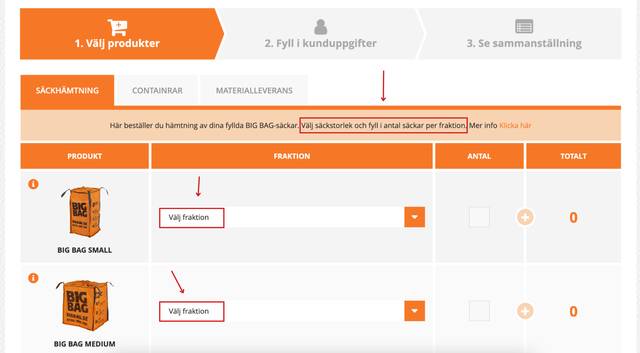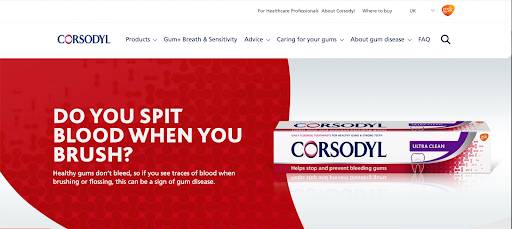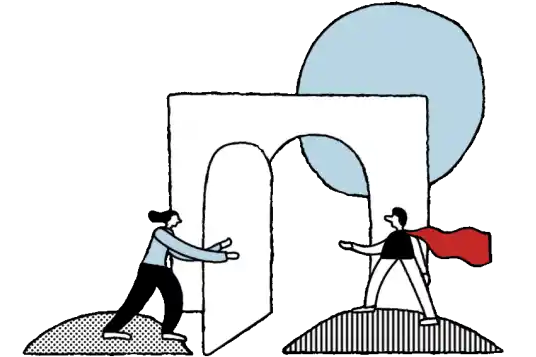
Previously, you learned more about the importance of getting to know your users to write in a way that suits them and about what conversion copywriting actually is. Now it's time to present more proven principles for writing converting copy on your site.
Before you decide what copy should be on a page, you must first ask yourself: "What is the goal of this page?" Then the copy you write should drive the visitor towards that goal. A too scattered copy where many topics are treated at the same time will only be distracting.
One technique is to start from your most important CTA and then work "backwards" with the remaining copy. The goal is for visitors to click the button, how do we persuade them to do so with as few words as possible?
There isn't much room for words on a button, but oh, how important they are! In various experiments, we have seen significant changes in the number of clicks on buttons just by changing or adding a word.
Think about the word "Call to ACTION." It is a call to action. Therefore, you should always have a verb that helps the customer complete the sentence "I want to…."
Presenting value to your visitors is important everywhere, even on a CTA. So besides having an action, try to include value too!

Which button feels more motivating to click?
A CTA should be simple to quickly grasp and give a push in the right direction. If it contains too many words, it becomes complicated, and the chance of it leading to a click is less. Somewhere between 3-6 words is a good starting point.
Since you've found your way to a CRO blog, this might not need to be said, but always test your CTA copy if you have the opportunity. Copy is often easy to test technically and has great potential to make a difference.
Imagine clicking on an ad that says "Buy now with 70% discount" and then landing on a page where there is no such offer. Then there's a pretty big chance you'll leave the page, right?
The thing is that the landing page must keep the promise that the ad, search result, or link made, otherwise, we lose the "scent" we got.
A personal address generally works better than talking about you and what you offer.
Many companies like to talk about themselves;
“We offer….”
“At our company…”
“With us, there is…”
But the focus should instead be on the person reading the text;
“You will get…”
“You can trust that…”
“Are you tired of…?”
Go through the text on your site or in a newsletter and see if you can replace “we,” “our,” and “us” with “you,” “your,” and “yours.”
There is a lot in copywriting that can be summarized with writing humanly. One example is error messages that often risk becoming technical and robotic.
Another way is to write more like you talk. Think about how you would sell your product in a store instead of using cool buzzwords and technical jargon on a product page or in an ad. How would you, for example, sell your product or service to your neighbor?
Example:
The product is a series of professional wireless and wired headsets specifically designed for the best possible calls in noisy, busy environments. The headsets include powerful encryption technology that ensures all interactions with citizens are protected all the way.
Would a salesperson stand in a store and say this? How about…?:
Our wireless headsets are made to work extra well in noisy environments. You don't have to worry about sensitive information leaking out because the headset is encrypted.
Everyone becomes blind to their own environment sooner or later, and it's hard to see the texts you write with the user's eyes. Everyone is affected sooner or later by the curse of knowledge.
What does this mean in practice? It means we have to be careful not to use words that are obvious to us but not to the user. Below you see an example from Big Bag, which thinks I should choose a "fraction." The problem is that I have no idea what that is.

Example of when the language is not user-focused
The decisions we make are often emotion-based, so if you don't write emotion-triggering copy, it's harder to persuade your visitors to convert.
It's not the product or service you sell that the visitor wants but who they become when the product is used. They are buying a better version of themselves!
It can feel uncomfortable to talk about problems, but showing the visitor that you understand their problem makes you more credible when you offer a solution.

Pain-focused copy - recognizing a problem and the solution to the problem
One page – one goal. Always start from the conversion goal.
2. Optimize Your CTA Copy
Thoughtful CTA copy makes a big difference. Add value, keep it short, and don't forget the verb!
3. Maintain the Scent
Ensure that landing pages respond to search results, ads, etc.
4. Keep the User in Focus
Write to a person, not about yourselves. Use more "you" than "we."
5. Write Like a Human
Avoid technical jargon, buzzwords, and robotic error messages.
6. Skip the Internal Jargon
Avoid words that users don't understand; they are not as knowledgeable as you.
7. Evoke Emotions
Emotions play a role in decision-making, so trigger them with copy.
Now go to your site and check if the copy there provides the right conditions for your visitors to convert into customers. Or even better, do a bunch of usability tests on your target audience and see if they understand what you want to say and can frictionlessly make it all the way to the goal!
Ready to accelerate your digital growth? Add your details here or email us at hej[a]conversionista.se and we’ll get back to you.
